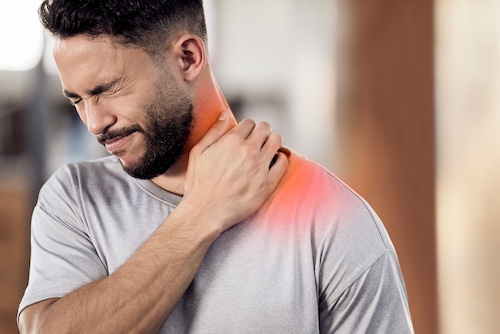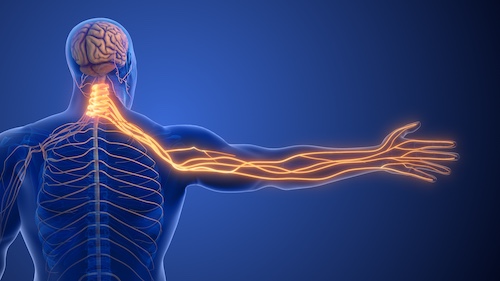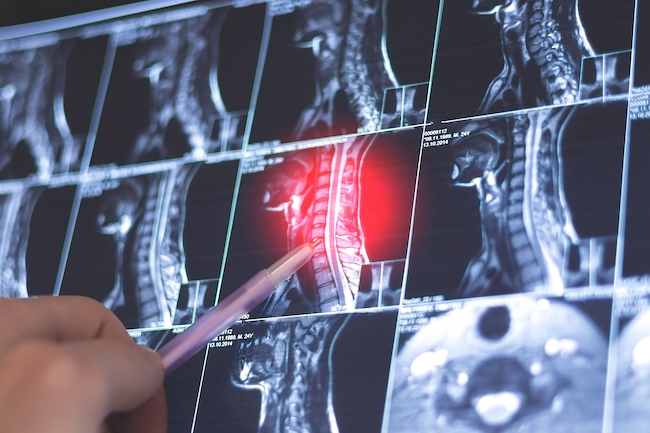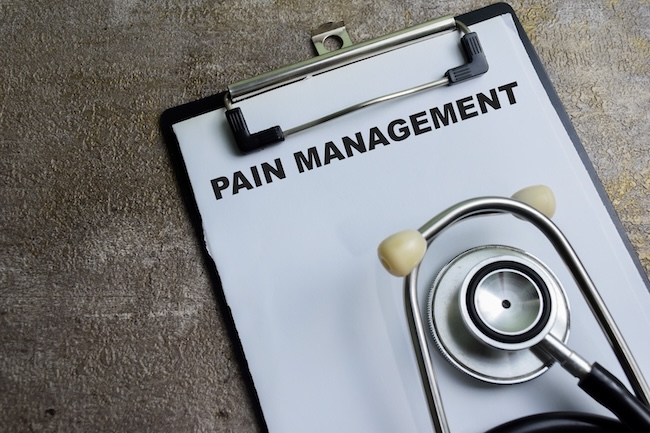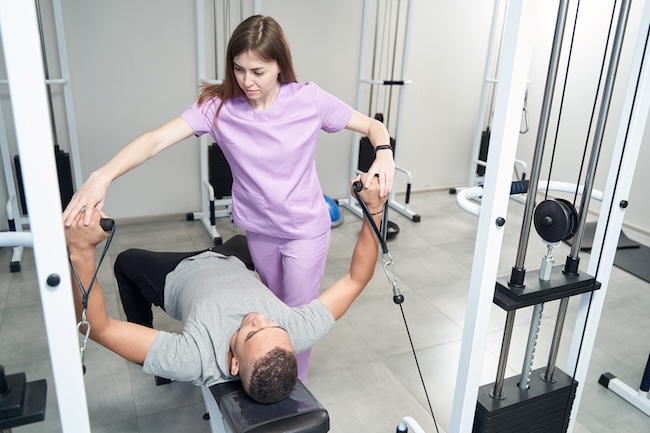Symptoms of Cervical Radiculopathy: What You Need to Know
Cervical radiculopathy occurs when a nerve root in the neck becomes compressed or irritated, often resulting in pain, numbness, or weakness that travels from the neck into the arm. These symptoms can interfere with daily tasks, sleep, and quality of life. At VeriSpine Joint Centers in Roswell, Georgia, we help patients understand the cause of their pain and provide targeted treatment options to relieve pressure on the affected nerve. Recognizing the early signs of cervical radiculopathy can lead to faster recovery and better long-term outcomes.
In this blog, we explain the symptoms of cervical radiculopathy, what causes them, how the condition is diagnosed, and how our cervical radiculopathy treatment services at VeriSpine Joint Centers in Roswell can help relieve pain and restore function.
What Is Cervical Radiculopathy?
Cervical radiculopathy occurs when a nerve root in the cervical spine becomes compressed or irritated, often leading to pain and neurological symptoms in the neck, shoulders, arms, or hands.
Cervical Spine and Nerve Roots
The cervical spine includes the top seven vertebrae of the spinal column. Between each vertebra, spinal nerves exit the spinal canal and travel to various parts of the upper body. These spinal nerve roots control muscle movements and sensations in the neck, shoulders, arms, and hands.
When one of these nerve roots becomes compressed or inflamed, the result is cervical radiculopathy. This condition affects the ability of the nerve to transmit signals properly, leading to symptoms such as arm pain, numbness, or muscle weakness.
What Happens When a Nerve Root Is Compressed
Cervical radiculopathy occurs due to nerve root compression or nerve irritation. This can be caused by a cervical disc herniation, bone spurs, or degenerative disc disease. A herniated disc can press on the spinal nerve, while degenerative changes can narrow the spaces where the nerves exit the spine, leading to pinched nerves.
As the nerve root becomes compressed, the symptoms often follow a specific pattern based on which nerve is affected. Patients may notice radiating pain from the neck into the arm or hand, changes in reflexes, or difficulty gripping objects.
Common Causes of Cervical Radiculopathy
The most common causes include:
- Cervical disc herniation
- Bulging or herniated disk
- Cervical spondylosis
- Degenerative cervical radiculopathy
- Bone spurs
- Spinal canal narrowing
Each of these conditions contributes to pressure on the nerve root. This pressure leads to inflammation and disrupts nerve function. Over time, untreated nerve root compression can result in more severe symptoms and longer recovery times.
Cervical Radiculopathy in Roswell, Georgia
Many patients in Roswell and the surrounding areas develop cervical radiculopathy due to repetitive motion, poor posture, or aging. At VeriSpine Joint Centers, we specialize in diagnosing and treating this condition using advanced imaging, physical examination, and conservative or interventional therapies. Early diagnosis helps relieve pain and prevent long-term nerve damage.
Primary Symptoms of Cervical Radiculopathy
Recognizing the symptoms of cervical radiculopathy early can help patients seek treatment before the condition worsens.
Neck Pain and Stiffness
One of the first signs of cervical radiculopathy is persistent neck pain. The discomfort may be sharp, aching, or burning. Pain often worsens with neck movement or holding the head in one position for long periods. Some patients also experience stiffness in the neck muscles that limits range of motion.
Radiating Pain Into the Arm
Pain from a compressed nerve root in the cervical spine can travel into the shoulder, arm, or hand. This radiating pain often follows the path of the affected nerve. It may feel sharp, electric, or throbbing. This type of upper extremity pain is a hallmark symptom and should not be ignored.
Numbness and Tingling
Patients may notice numbness or tingling in the arm, hand, or fingers. These sensations occur when the spinal nerve cannot properly send signals due to nerve compression. The pattern of numbness usually matches the area served by the irritated nerve root.
Muscle Weakness
Muscle weakness is a sign of more advanced nerve root irritation. Patients may have trouble lifting objects, gripping items, or performing daily tasks. In some cases, weakness is the first symptom that prompts a visit to the doctor. Left untreated, nerve damage can become permanent.
Reduced Reflexes and Coordination
Cervical radiculopathy can affect reflexes in the arms and hands. During a physical exam, a physician may find reduced or absent reflex responses. Patients might also notice poor coordination or difficulty with fine motor movements.
Symptoms May Worsen With Certain Positions
Many patients report that symptoms increase when the neck is in certain positions, such as looking up or turning the head. Activities like driving, using a computer, or sleeping without neck support can aggravate the symptoms. A soft cervical collar or cervical traction may provide temporary relief by reducing pressure on the affected nerve.
Causes and Risk Factors
Cervical radiculopathy develops when specific conditions or lifestyle factors place pressure on a spinal nerve root in the cervical spine.
Disc Herniation and Degenerative Disc Disease
A common cause of cervical radiculopathy is cervical disc herniation. When the soft inner material of a spinal disc pushes through the outer layer, it can compress a nearby nerve root. Bulging or herniated disks often result from aging, injury, or repeated strain on the cervical spine.
Degenerative disc disease also contributes to nerve root compression. Over time, spinal discs lose height and flexibility. This increases the risk of bone-on-bone contact and pinched nerves. These degenerative changes are a frequent cause of cervical radiculopathy in adults over 40.
Bone Spurs and Cervical Spondylosis
Bone spurs, also known as osteophytes, form as the body responds to joint degeneration. These bony growths can narrow the spinal canal or foramina, which are the openings where spinal nerves exit. When bone spurs press on a nerve root, they can cause pain, numbness, and weakness.
Cervical spondylosis is the medical term for age-related wear and tear in the cervical spine. It includes joint stiffness, disc degeneration, and the formation of bone spurs. Cervical spondylosis often leads to degenerative cervical radiculopathy.
Repetitive Motion and Physical Strain
Certain occupations and daily activities increase the risk of developing cervical radiculopathy. Jobs that require frequent neck movement, overhead lifting, or long periods of sitting can strain the cervical spine. Poor posture, especially while using digital devices, adds to the stress on the neck muscles and spinal discs.
Prior Injury or Spinal Conditions
A past spinal cord injury or trauma to the neck can increase the likelihood of nerve root irritation later in life. Patients with a history of spinal instability or previous surgery may develop symptoms as surrounding tissues degenerate or shift.
Age and Lifestyle Factors
Cervical radiculopathy is more common in middle-aged and older adults due to natural spinal degeneration. Risk factors also include smoking, obesity, and a sedentary lifestyle. These factors may weaken spinal structures and reduce the body’s ability to repair tissue.
Understanding these causes helps identify patients at higher risk. If symptoms of cervical radiculopathy appear, early diagnosis and treatment at VeriSpine Joint Centers in Roswell can prevent further nerve damage.
How Cervical Radiculopathy Is Diagnosed at VeriSpine
A clear diagnosis is the first step in treating symptoms of cervical radiculopathy. At VeriSpine Joint Centers in Roswell, we use a detailed process to identify the cause and severity of the condition.
Medical History and Symptom Review
Diagnosis begins with a review of the patient’s medical history. This includes questions about the duration, location, and type of pain. We ask whether the patient has experienced neck pain, radiating arm pain, numbness, or muscle weakness. Identifying patterns helps link symptoms to a specific spinal nerve root.
Patients are also asked about past injuries, work conditions, physical activities, and any previous spine-related issues. These details guide the next steps in evaluation.
Physical Examination
A physical exam is performed to test strength, reflexes, and sensation in the upper extremities. The physician may ask the patient to move the neck in different directions to check for pain or limited range of motion. Weakness in the arm or hand, reduced reflexes, and sensory loss can indicate which nerve root is affected.
Spurling’s test is often used. This involves gently pressing on the top of the head while tilting it to one side. Increased pain during this test may suggest nerve root compression.
Imaging Studies
To confirm the diagnosis, we use advanced imaging techniques. An MRI provides a detailed view of the cervical spine, including soft tissue, spinal nerves, and discs. It shows whether a cervical disc herniation, bone spur, or spinal canal narrowing is pressing on a nerve root.
X-rays may be used to identify bone alignment or signs of cervical spondylosis. In some cases, a CT scan or CT myelogram is used to get a clearer view of the spinal canal and surrounding structures.
Nerve Testing if Needed
When symptoms are unclear or involve more than one nerve, nerve conduction studies or electromyography (EMG) may be performed. These tests measure how well electrical signals travel through the spinal nerves and muscles. They help confirm whether cervical radiculopathy is the cause of the symptoms.
Accurate diagnosis ensures the right treatment plan. VeriSpine Joint Centers uses a full range of diagnostic tools to identify cervical radiculopathy and guide the next steps in care.
Get Expert Help for Symptoms of Cervical Radiculopathy ASAP!
If you are experiencing persistent neck pain, radiating arm pain, or signs of nerve compression, our team at VeriSpine Joint Centers in Roswell is ready to help. We specialize in diagnosing and treating cervical radiculopathy with focused, evidence-based care.
Schedule an appointment with us today at 678-782-7999!
